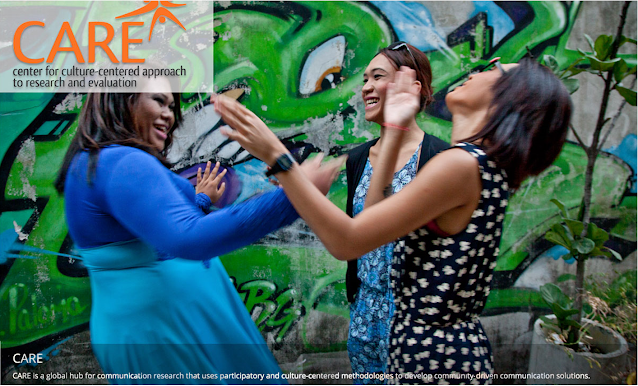THE FIJI
TIMES 152nd ANNIVERSARY – PART 3 of 4
HOW FT
CONTRIBUTED TO FALL CHAUDHRY GOVERNMENT IN 2000 “SPEIGHT COUP”.
Thakur
Ranjit Singh
PROLOGUE - PART 3
This is the THIRD PART continuation of the
four-part series on the history of the
Fiji Times (FT). This is from already published articles and my research of
Master’s Thesis – a historical notoriety of a Fiji newspaper never told in this
manner and language. [See link to research at the end of this article]
DISCLAIMER: All reference to FT is to the foreign-owned
paper before localisation in 2010. Hence I do not have any concerns with the
locally - owned FT of 2021.
INTRODUCTION
In Part 2, we further showed how “skirt-journalism”, racist and biased
reporting created ethnic issues and negativity against an “Indian” government
of Chaudhry.
Mahendra Chaudhry (centre top) with three Itaukei people who were behind his removal-directly or indirectly: (L-R) Laisenia Qarase, Sakiasi Butadroka and George Speight.
Part 3 enumerates
extracts of conclusion from my research thesis as part of my Masters in Communisation Studies (Journalism) at Auckland
University of Technology (AUT). It reveals that the leopard did not change
spots even after a century. Subsequent to departure of the white men, they continued
being towel boys and lapdogs of Eastern Chiefs, elite Itaukei, ethnonationalist
politicians and Gujarati businesses (has it changed ever?),
and how they contributed to the disturbances by George Speight and the fall of
Fiji’s democracy in 2000. This was mostly done through unbridled and racially
skewed newsroom management with conflicting viewpoint on boundary between good
and fair journalism and racism, favouring your own types. The partisan stance
of FT, with poor internal management shamed journalism - the Fourth Estate. Please
read that here…………..
THE FIJI TIMES - PART 3 (OF 4)
The
Concluding Remarks of my Research
I had conducted
an analysis of the Fiji Times for one year, May 1999 to May 2000, leading to
attempted coup by George Speight.

Mahendra Chaudhry (L) with his captor, George Speight after his release from 56 days captivity in Fiji Parliament building in May-June, 2000.
Almost two thirds (62.8%) of the analysis reported
negatively against People’s Coalition government while less than 10% showed any
warmth towards the government. Only just over a quarter (27.4%) of the items
were of neutral in nature. In fact a reputable and credible media should have
100% balanced, fair, neutral, and impartial reporting. Of the 19 sections
covered, thirteen (68.4%) reported 50% or more negative items while three of
these were above 90%. So, you can see how partisan and unfair FT was.
The sections of media analysis , among others,
covered major issues of interest under Chaudhry government as reported over one
year of People’s Coalition government
rule. The following topics were covered for analysis in my research:
Election
Victory & Politics , Media Issues, Racial Agitation/Protests, Land, Rajen
Chaudhry, Tea Lady Affair, Baba & Chaudhry Tensions, Clark-Hunter Work Permits,
Constitutional Amendments, Fiji Hardwood and Speight, Industrial Issues, Ganesh
and Chaudhry Houses, Housing Authority, Margaret Wise, Daily Post and Radio
Fiji Ban, Socialism and Sharing Wealth, Punja and Companies, Political
Personalities and Zimbabwe Land Problems.
The trend of reporting showed that for the largest selling paper in the country, such a large percentage of negative items would end up affecting people’s perception of the government. However a poll conducted seven months after election victory revealed that despite so much negative reporting, Chaudhry government, reported very advanced positive poll results, higher than ever gained by Rabuka government before him.
Therefore it would appear that those plotting to
overthrow the government had to act fast before the government became too
popular with the common people. And then began FT’s questionable reporting,
that has been summarised here. If you read my thesis, (link given below) it
also shows photo-shoot of relevant offending articles, photos and headlines
that resulted in assault of democracy in Fiji.
My conclusion makes interesting reading,
especially Fiji Indians will be able to relate to them from a racism
perspectives. In the Newsroom of FT,
almost 96% of stories and control were by Itaukei editors, journalists,
and controllers of news when the Fiji Indians comprised some 40% of Fiji
population. Read, be shocked, and clap your hands for 152nd
anniversary celebrations of the Fiji Times for its contributions to the country:
Some of the notable concluding observations from the content analysis in my research were:
1) There was obvious discord between what FT said and advocated in its editorials, and what appeared in the papers - it failed to walk its talk. There appeared to be clash, disagreements and conflict between editorials and news content. It was like one part of you is trying to make peace between two persons fighting, while the other part is secretly winking at one of them to keep on fighting. Or like a proverbial rat in some African traditions, which bites, and at the same time blows to soothe the pain of its biting. This description aptly fitted FT on occasions where it appeared to have one view of the editorial writer while completely opposite stance was seen in the stories appearing in the news pages. In Hindi, the saying of ..” bagal mein choori, mukh mein Ram.. which means praising God, while hiding a knife on the side to stab at an opportune time. This reflected a disagreement between the editorial opinion and the newsroom. FT failed to practice what it preached. What it advocated and pontificated in its editorials, it failed to reflect them in its news pages. What this means is, in its editorial by White men, it was preaching all the goodness of a fair journalism, while the stories by Itaukei Editor and senior Itaukei journalists spewed racial venom against a “Fiji Indian” Chaudhry government.
| Some Fiji Times headline that Chaudhry government had to endure in its short one-year term. |
2) The lack of coordination between the newspaper
management and the newspaper operations.
Elaborating what was said above, the ‘management’, comprised of expatriate
policy and editorial formulators, notably the expatriate publisher and the
editor in chief, Alan Robinson, and Russell Hunter (for part of
the time) respectively. The ‘operations’ or the
Fijian(Itaukei) ‘gatekeepers’ comprised of the editor Samisoni
Kakaivalu, his Deputy Netani Rika and the senior Fijian newsroom
team including Margaret Wise, about whom you read in Part 2. Lack of
coordination appears to have stemmed from unbridled newsroom control on the
local staff who coined up the headlines that chose and manufactured stories and
headlines, as had been cited by a researcher
where a Fiji Indian journalist at FT admitted that the article she wrote
was completely twisted and the headline was given by a member of the senior
staff. The ‘management’ expatriate executives have to be accountable for what
we found as an environment which gave unbridled ‘gate keeping’ duties to
unqualified, insensitive, and partisan newsroom (Itaukei) staff.
3) New
groups of militant and nationalist makeshifts (tin-pot) organisations sprung up
overnight to oppose government’s initiatives. Their little-known leaders
with suspect following were given undeserved and unbridled exposure by FT under
the guise of media freedom, despite such utterances bordering on sedition and
hate-speeches, and in clear breach of Media Code of Conduct and Ethics. Every
now and then you would have a tin-pot Itaukei nationalist and questionable
leader, with little credibility and following, rising up and vomiting anti-Fiji
Indian poison, and FT had no hesitation in highlighting verbal diarrhoea and
racists diatribes of such leaders while ignoring clarifications and statements
from the government and officials of the day.
4) Open disrespect to President and PM - FT provided ample opportunity to any man and
his dog who wished to take a pot shot at the highest seat of the country- the
President and the Prime Minister. A responsible, civilised media, especially in
a developing country divided on racial lines would be expected to exercise
caution and sensitivity. FT committed dereliction of ethics and duties by
permitting and sanctioning such show of disrespect to the leaders of a
developing nation under the guise of media freedom. One is free to be critical
of the politicians of any shades or colour. But when it comes to the SEAT OF
THE COUNTRY, such as the Prime Minister or President, the POSITIONS
command respect, and no credible newspapers would ever allow any dogs of racism
to piss on the highest poles and seats of the nation. Unfortunately, over a
century-old FT allowed this to happen without blinking an eye lid.
Protest by Indians in Haryana, India, Chaudhry's ancestral land by those raising their voice against his removal in Fiji.
5) Lack of Balance - The number of important issues where government had to resort to
letters to editor column to tell its side of the story was evident that there
was something grossly amiss in media’s balance and adherence to Code of Conduct
that called for equal opportunity of response. In the analysis, instances were
quoted where the government as well as the members of the general public wrote
in to clarify and inform on issues which was seen as the media’s role. It
appears either FT failed to grasp and inform on issues, or it deliberately
failed in its duty of keeping Fiji well informed to safeguard democracy. Sadly,
FT failed to balance their stories with all sides of views - a strong pillar of
respected journalism. FT clearly displayed its neglect and recklessness of duties
and failed to protect and defend democracy – another strong pillar of any
respectable Fourth Estate (media). It failed to allow the same space and
opportunity to the Government of the day to clarify lies and unsubstantiated
claims by the opposition, ethnonationalist officials of statutory organisations
(read NLTB) and tin-pot nationalist leaders.
6) Failure of FT to recognise lopsided racial mix: In Fiji, it is a Constitutional requirement and
direction (in 1977 Constitution) to grant equitable distribution of civil
service positions at all levels to reflect the country’s demographic makeup. It
seems this escaped the knowledge of FT. That is why it allowed misinformed
viewpoints without trying to point out the anomaly, with extremely high
percentage in Military and civil service with information on land ownership and
other standard statistics. It not only ignored the lopsided racial mix elsewhere
in government, but itself failed to abide by the general principle that the
newsroom should be the mirror of the country. There was marked favour of Itaukei
, not only at all (especially senior) levels of its news team, but also in news content reporting where some 95 % of the stories with by lines
were from Itaukei reporters in a racially divided nation with Fiji Indians
comprising some 40% of the population at that time. Over two-thirds of FT
newsroom was populated by Itaukei, and they filed almost all stories, with a
few “balanced” stories coming from Fiji Indian reporters, and they were few and
far in between.

Mahendra Chaudhry, when PM( L-R) with President of Fiji Labour Party, Jokepeci Koroi, Fiji's President, Ratu Sir Kamisese Mara and his wife, Vir Mati.
Sounds shocking? The balance of conclusion and the
concluding remarks leading to fall of People’s Coalition Government will be
revealed in PART 4 and the final part of this four - part article.
[About the Author: Thakur Ranjit Singh is former
publisher of now closed, partly government-owned Daily Post newspaper, a
journalist, a media commentator, a community worker in Auckland and runs his
blog FIJI PUNDIT. He did a research on the role of the Fiji Times in contributing
to destabilising of democracy by a partisan
newspaper that culminated in Speight’s attempted coup in 2000. Details
in the articles are largely from his Masters in Communication (MCS) thesis at
Auckland University of Technology (AUT) in 2011, and already published material.
All reference to Fiji Times is to the foreign owned entity prior to
localisation in 2010.
E-mail: thakurjifj@gmail.com
Link to thesis: https://openrepository.aut.ac.nz/handle/10292/2554
xxxxxxxxxxxxxxxxxxxxxxxxxxxxxxxxxxxxxxxxxxxxxxxxxxxxxxxxxxxxxxxxxxxxxxx




























